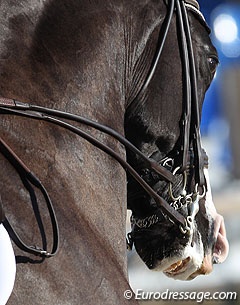
Since the end of February 2012 The Netherlands is dealing with an outbreak of Equine Herpes Virus which has debilitated the equestrian world there. The virus has broken out in three places (Berg en Dal, Heumen and Woubrugge) and many stables have closed their doors.
Due to the outbreak the Dutch Equestrian Federation has recommended all competitions to be cancelled until 11 March 2012. The federation advises riders not to transport their horses. Dutch stallion stations are also rescheduling their stallion shows.
Most stables have closed their doors and are not travelling the horses to shows, nor to their trainers. International Grand Prix riders such as Sander Marijnissen and Anky van Grunsven have cancelled their entry at the 2012 CDI Dortmund this weekend.
The 2012 World Cup Finals for show jumping and dressage are set to take place in 's Hertogenbosch, The Netherlands, on 19 - 22 April 2011 but the event will definitely take place as the outbreak should have subsided by then.
Equine herpesvirus is a common DNA virus that occurs in horse populations worldwide. The two most common strains are EHV-1, which causes abortion, respiratory disease and neurologic disease; and EHV-4, which usually causes respiratory disease only but can occasionally cause abortion.
Respiratory disease caused by EHV is most common in weaned foals and yearlings, often in autumn and winter. Older horses are more likely than younger ones to transmit the virus without showing signs of infection. Although EHV-1 causes outbreaks of abortion, EHV-4 has only been associated with single occurrences and is not considered a risk for contagious abortions.
EHV-1 myeloencephalitis results from widespread vascular injury after damage to the vascular endothelium of the blood-brain barrier. Neurologic signs result from vasculitis, thrombosis, and necrosis of neurologic tissue. Herpesvirus myeloencephalitis cases occur singly or as outbreaks affecting 20-50% of the population. They may or may not be associated with a previous or ongoing EHV-1 respiratory disease outbreak.
Photo © Astrid Appels